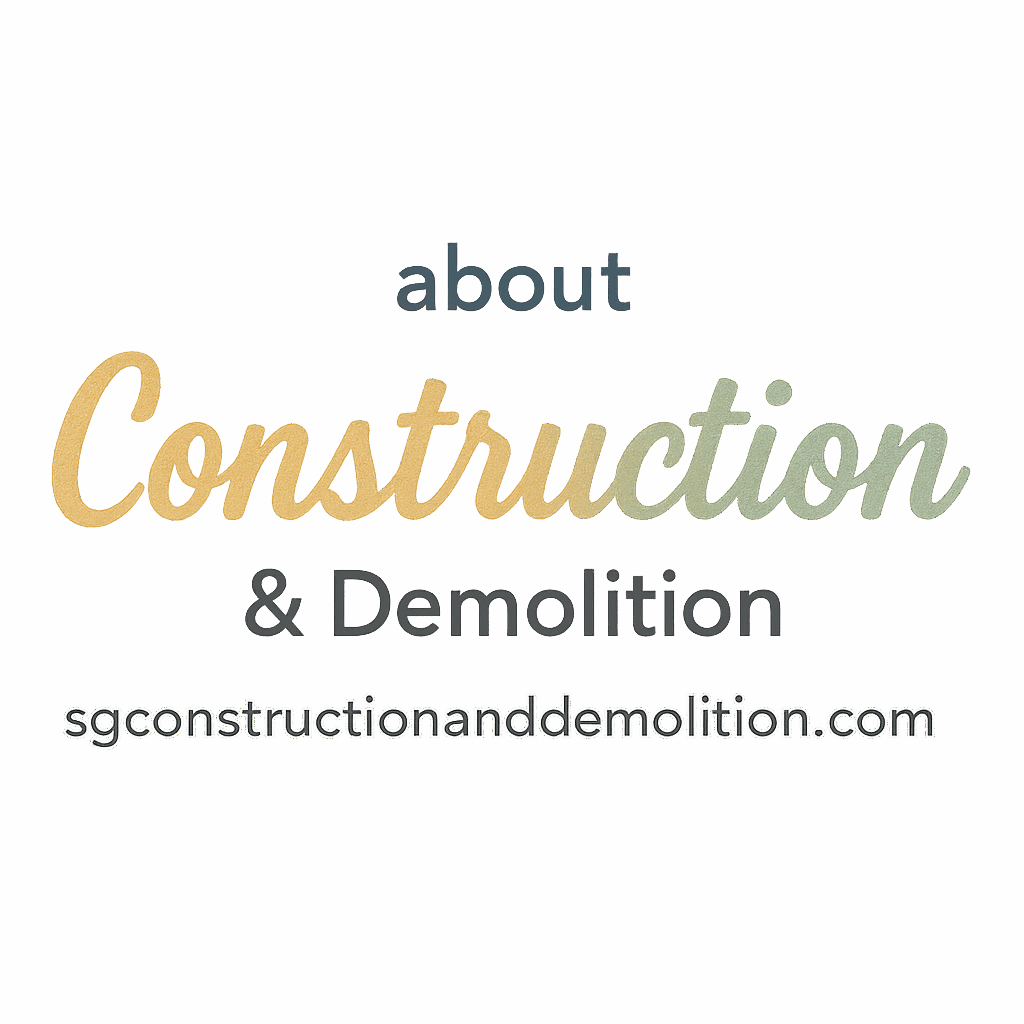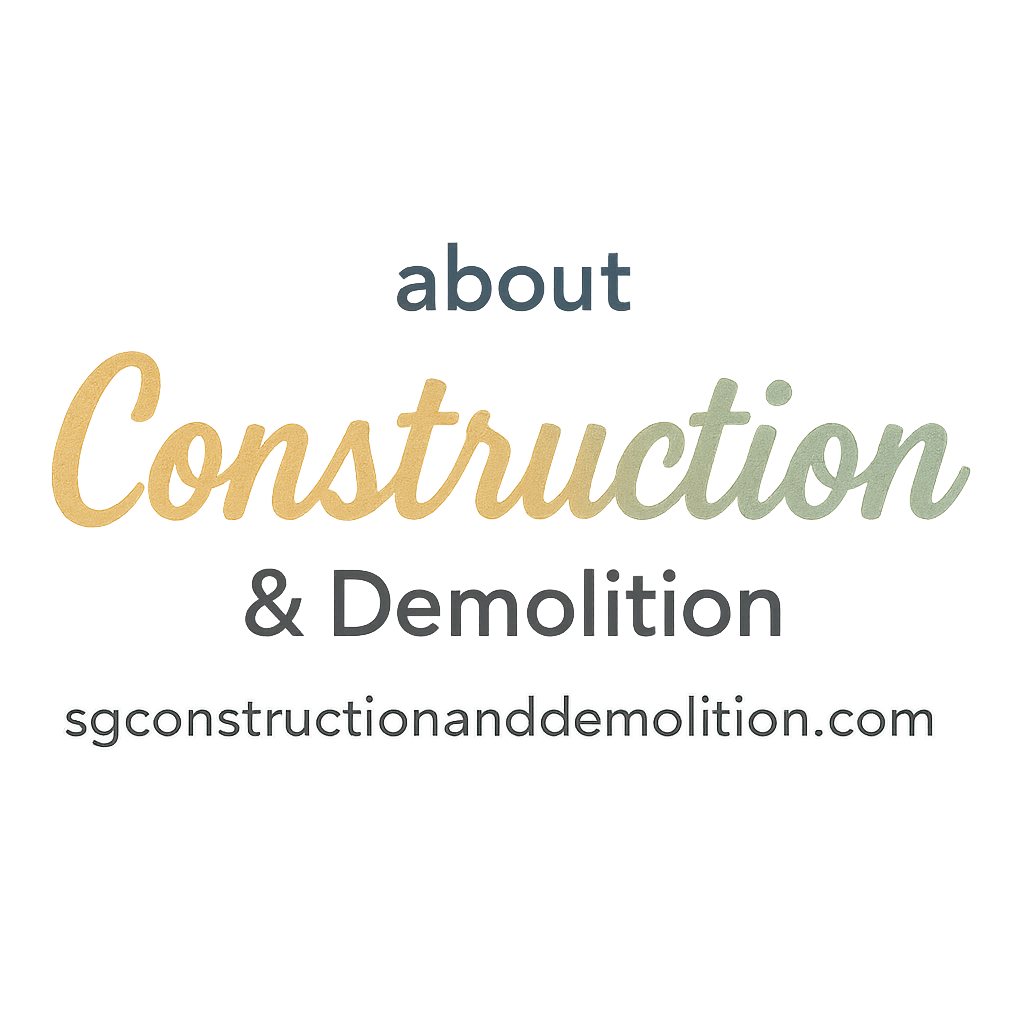Introduction
Let’s face it—every building has a shelf life. No matter how sturdy or iconic a structure might seem, time, nature, and progress eventually catch up. That’s where construction demolition comes in. It’s not just about tearing things down—demolition is an essential part of rebuilding, repurposing, and revitalizing space for better use. In this post, we’ll dive into five types of buildings that require construction demolition, why they need it, and what goes into the process. Whether you’re curious about the demolition techniques or planning a construction overhaul, this guide has you covered.
Explore more about construction basics or demolition techniques if you’re new to the topic.
1. Abandoned or Unsafe Buildings
Structural Integrity Issues
One of the most common reasons buildings are demolished is because they’re abandoned and no longer safe to inhabit. Over time, buildings suffer from wear and tear, weather damage, and sometimes neglect. Foundations weaken, support beams rot or rust, and walls begin to crack.
Signs of Collapse Risk
When a building shows signs like sagging roofs, warped doorframes, or wide foundation cracks, demolition might be the only safe path forward. It’s not just about protecting the structure—it’s about protecting the people around it.
Health Hazards Like Mold or Asbestos
Beyond the obvious structural risks, older abandoned buildings often harbor hazardous materials. We’re talking about asbestos, mold, and lead paint—all of which pose serious health threats. Removing these safely often requires complete demolition.
Check out our planning and safety guidelines to understand how professionals handle these dangers.
2. Old Commercial Buildings
Outdated Layouts and Infrastructure
You know those run-down shopping centers or office buildings with flickering lights and outdated HVAC systems? These structures often aren’t up to code anymore. Instead of costly renovations, many property owners choose to start fresh through demolition.
Redevelopment and Zoning Changes
Cities are constantly evolving. What used to be a warehouse district might now be a residential hotspot. Demolishing old commercial buildings opens the door for smarter, more profitable developments.
Urban Planning and Modern Demands
Demolition plays a big role in meeting urban needs—think public transit access, green spaces, or higher-density housing. Visit our article on green and smart trends to see how innovation is reshaping demolition projects.
3. Residential Properties for Redevelopment
Flipping Homes and Lot Maximization
In areas with rising property values, it’s often more profitable to tear down an old house and build anew. Home flippers and developers may demolish a structure to maximize square footage, add more units, or install modern amenities.
Neighborhood Upgrades and New Projects
As communities grow, local governments and developers may demolish homes to create parks, schools, or housing complexes that better serve the population. These projects often involve thoughtful planning and can be quite transformative.
Explore more beginner-friendly guides under our tag: beginners if you’re new to redevelopment.

4. Industrial Facilities
Hazardous Waste and Decommissioning
Industrial buildings are often home to dangerous chemicals, heavy machinery, and outdated infrastructure. When such a facility is no longer in use, demolition becomes a necessity to decommission the site safely.
Repurposing Industrial Land
There’s a rising trend of converting old industrial spaces into residential or commercial hubs. But before that can happen, full-scale demolition is usually required to clear the space.
Environmental Regulations and Permits
Because of the environmental impact, demolishing an industrial facility often requires special permits and adherence to regulations. It’s critical to understand the necessary tools and equipment and work with experts.
5. Government and Institutional Buildings
Schools, Hospitals, and Public Facilities
Government-owned buildings like schools or hospitals can become outdated quickly. When they no longer meet safety, accessibility, or energy-efficiency standards, demolition is often the only path forward.
Seismic or Energy-Efficiency Standards
Modern regulations may require public buildings to meet strict earthquake resistance or green energy standards. If retrofitting costs exceed replacement, demolition makes sense.
Stay up to date with evolving construction trends that influence public infrastructure decisions.
The Role of Professional Demolition Services
Planning and Safety Considerations
Demolition isn’t just swinging a wrecking ball—it’s a calculated operation that involves engineers, environmental specialists, and heavy equipment operators. Professionals follow detailed safety plans and obtain the right permits to protect the public and environment.
For more, visit our detailed guide on planning safety.
Tools, Equipment, and Techniques Used
From explosives for high-rises to selective demolition for preserving parts of a structure, the process varies widely. Having the right equipment is crucial for success.
Green and Smart Demolition Trends
Sustainable Disposal and Recycling
Modern demolition services focus on eco-friendly solutions. Many materials—steel, brick, wood—can be salvaged and reused. This reduces landfill waste and lowers costs.
Smart Tech in Demolition
New tools like drones, 3D mapping, and robotics are transforming the field. These smart technologies help teams work faster, safer, and more precisely.
Check out what’s trending in smart-tech demolition.
Common Misconceptions About Demolition
Myth: Demolition Is Always Destructive
Not true. In fact, many demolitions today are selective, preserving what’s useful and only removing what’s necessary. Controlled demolition can be surgical and efficient.
Myth: It’s Cheaper Than Renovation
While that’s sometimes the case, not always. Demolition includes labor, permits, waste disposal, and rebuild costs. Compare your options wisely!
Bust more myths around demolition before starting your project.
Conclusion
Demolition isn’t just about destruction—it’s about transformation. From crumbling homes to outdated factories and obsolete public facilities, each building type has unique reasons for demolition. Whether driven by safety, efficiency, or development potential, tearing down the old often paves the way for something greater.
Planning a demolition project? Head to SG Construction and Demolition for the tools, tips, and guidance you need.
FAQs
1. What’s the first step before demolishing a building?
Start with an inspection and planning process, including permits and structural evaluations.
2. How long does it take to demolish a building?
It depends on the size and method. A small home might take days, while large commercial projects can take weeks.
3. Can materials from demolition be reused?
Yes! Many materials like wood, brick, and steel are recyclable and reusable.
4. What’s the difference between selective and full demolition?
Selective demolition removes only certain parts, while full demolition clears the entire structure.
5. Are there green methods of demolition?
Absolutely. Green demolition focuses on recycling, minimal waste, and eco-friendly practices.
6. Is demolition safer than renovation?
In structurally unsafe buildings, yes. Demolition avoids hidden risks like asbestos or collapse.
7. Do I need a professional for small-scale demolition?
Yes, even for small projects, professionals ensure safety, legality, and proper cleanup.


